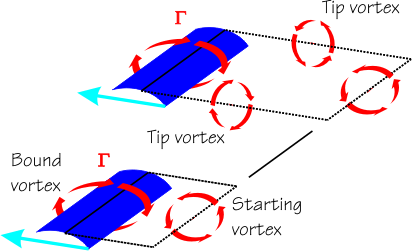Thanks in advance.



In researching the purpose for the slot on the McLaren, I found the opposite to be true. Counter-intuitive, yes, but it is the case.autogyro wrote:Surely the closer to break away from conventional reasons the airflow becomes, the easier it is to assist break away by blowing?
With a very high angle of attack the wing must become close to boundary layer break away as speed increases anyway?
All dependant on just how sensitive the wing is to begin with.vonk wrote:Can anybody point me to a formal treatment of the following question? Does anybody know how hard the F1 wings have to be blown to stall?
Yeah, you'll never separate at least the first 50% of chordlength of the first element of an F1 rear wing (as currently designed).Giblet wrote:I don't think the wing ever completely stalls anyways. It stalls it to a point, effectively lessening it's angle of attack.
Can you elaborate on the bound vortex?kilcoo316 wrote:Giblet wrote:Break the bound vortex though, and the method of downforce production changes. So, depending on how you define stall, it is or isn't.

Erm... for practical reasons, I can't go into too much really.vonk wrote:Can you elaborate on the bound vortex?

In what way is it not physical?Ogami musashi wrote:Please pay attention that vortex (especially the central one) which is value of the integral of circulation is not physically a vortex. Rather this is an elemental method to calculate forces on an airfoil;
Very interesting topic. I am actually carrying out some experimental investigations related to this priciple. I´m looking at varying the incidence, the chordwise location and its equivalence to an aileron deflection. I have modified the wing slightly so that the flow just upstream of the blowing slot is about to separate, therefore requiring a relatively small Vjet to induce separation. From what I've read, ideally you want Vjet of the same order of magnitude as Uinfinity.cornermarker wrote:Too hard for it to be a practical application on a formula one wing. This is what happens when you blow air through a slot in crossflow on a wing:
You get a vortex. A vortex created by a jet of air has actually been studied only to keep flow attached, surprisingly, not to cause separation. So the question becomes, how hard would you have to blow to not get a vortex, but to get something else.
So hard, it's just not worth it, if it can be done at all.
If you want to create separation, blowing air transversely like that is the last thing you'd want to do. That's what all the research says.
Kelpster
Cool, will you be using a wind tunnel or water chamber? If using a program, a good way to calibrate your work would be to see whether a slot jet actually helps flow stay attached. If not, it won't represent what researchers have found:jla06 wrote:Very interesting topic. I am actually carrying out some experimental investigations related to this priciple. I´m looking at varying the incidence, the chordwise location and its equivalence to an aileron deflection. I have modified the wing slightly so that the flow just upstream of the blowing slot is about to separate, therefore requiring a relatively small Vjet to induce separation. From what I've read, ideally you want Vjet of the same order of magnitude as Uinfinity.cornermarker wrote:Too hard for it to be a practical application on a formula one wing. This is what happens when you blow air through a slot in crossflow on a wing:
You get a vortex. A vortex created by a jet of air has actually been studied only to keep flow attached, surprisingly, not to cause separation. So the question becomes, how hard would you have to blow to not get a vortex, but to get something else.
So hard, it's just not worth it, if it can be done at all.
If you want to create separation, blowing air transversely like that is the last thing you'd want to do. That's what all the research says.
Kelpster
By the way, Cornermarker, where did you find the image of the velocity field?